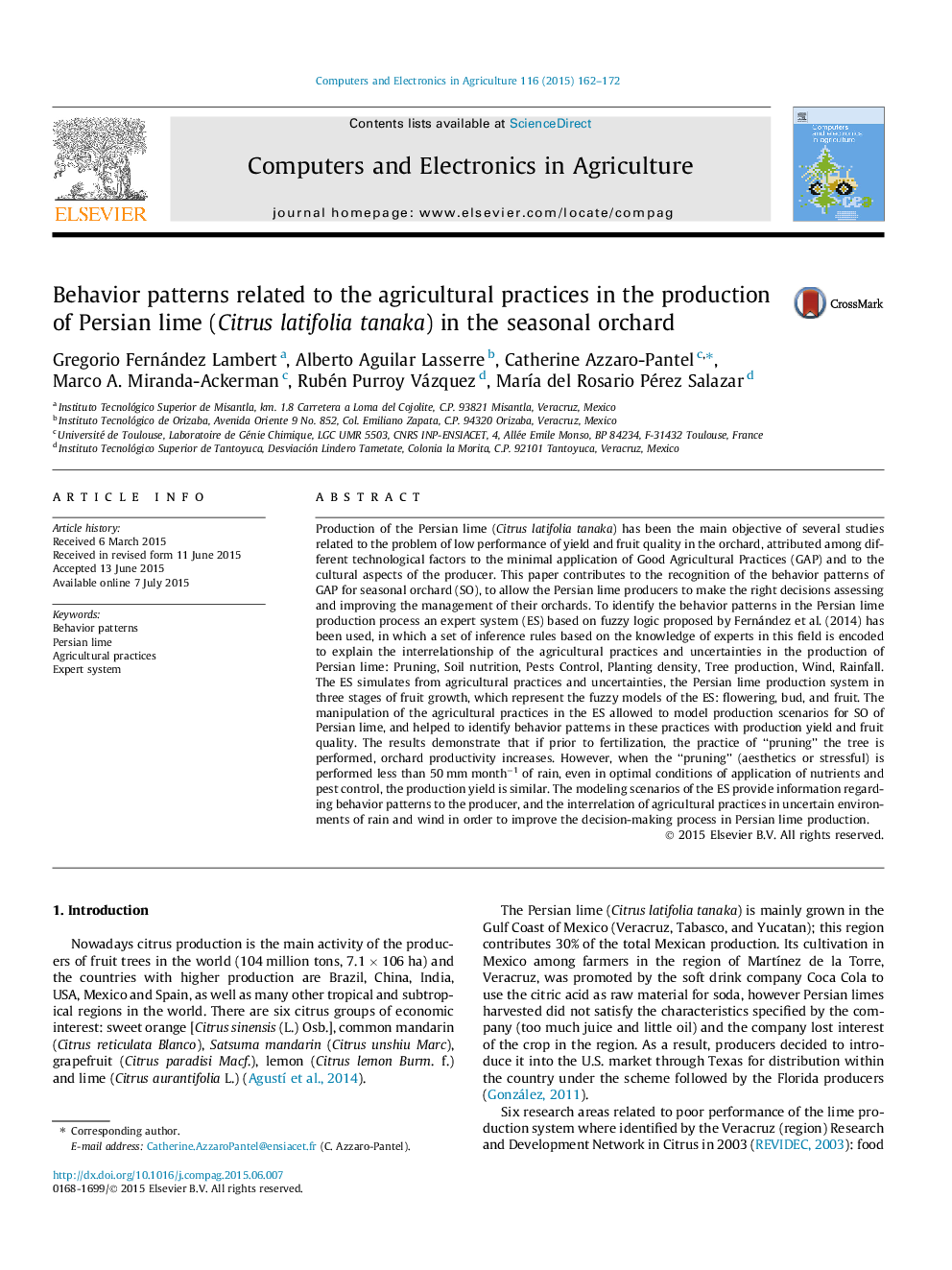| کد مقاله | کد نشریه | سال انتشار | مقاله انگلیسی | نسخه تمام متن |
|---|---|---|---|---|
| 84149 | 158865 | 2015 | 11 صفحه PDF | دانلود رایگان |

• The behavior patterns in the Persian lime production process are studied.
• An expert system (ES) based on fuzzy logic is developed.
• The interrelationship of the agricultural practices is highlighted.
• The productivity of the orchard increases when the “pruning” of the tree is performed prior to fertilization.
• The producer decisions in the production of Persian lime can be improved.
Production of the Persian lime (Citrus latifolia tanaka) has been the main objective of several studies related to the problem of low performance of yield and fruit quality in the orchard, attributed among different technological factors to the minimal application of Good Agricultural Practices (GAP) and to the cultural aspects of the producer. This paper contributes to the recognition of the behavior patterns of GAP for seasonal orchard (SO), to allow the Persian lime producers to make the right decisions assessing and improving the management of their orchards. To identify the behavior patterns in the Persian lime production process an expert system (ES) based on fuzzy logic proposed by Fernández et al. (2014) has been used, in which a set of inference rules based on the knowledge of experts in this field is encoded to explain the interrelationship of the agricultural practices and uncertainties in the production of Persian lime: Pruning, Soil nutrition, Pests Control, Planting density, Tree production, Wind, Rainfall. The ES simulates from agricultural practices and uncertainties, the Persian lime production system in three stages of fruit growth, which represent the fuzzy models of the ES: flowering, bud, and fruit. The manipulation of the agricultural practices in the ES allowed to model production scenarios for SO of Persian lime, and helped to identify behavior patterns in these practices with production yield and fruit quality. The results demonstrate that if prior to fertilization, the practice of “pruning” the tree is performed, orchard productivity increases. However, when the “pruning” (aesthetics or stressful) is performed less than 50 mm month−1 of rain, even in optimal conditions of application of nutrients and pest control, the production yield is similar. The modeling scenarios of the ES provide information regarding behavior patterns to the producer, and the interrelation of agricultural practices in uncertain environments of rain and wind in order to improve the decision-making process in Persian lime production.
Figure optionsDownload as PowerPoint slide
Journal: Computers and Electronics in Agriculture - Volume 116, August 2015, Pages 162–172